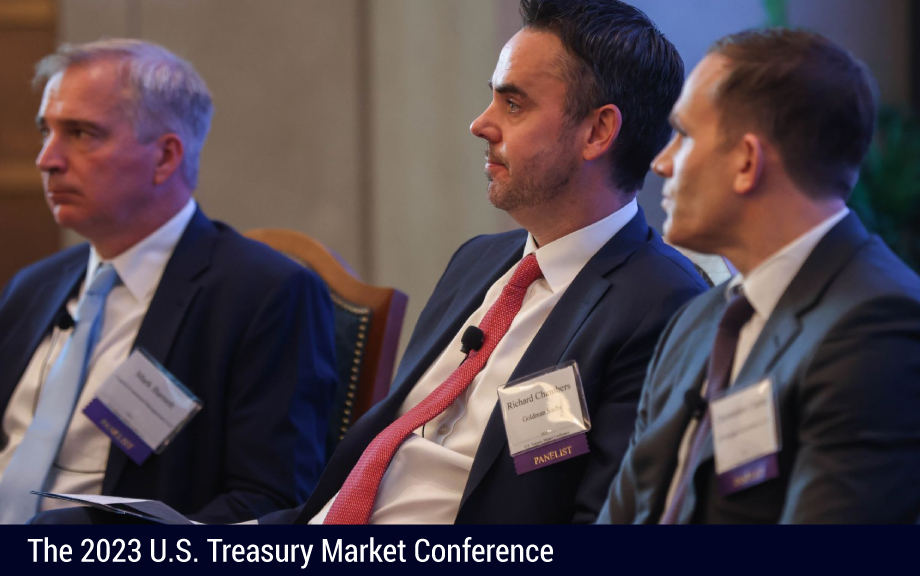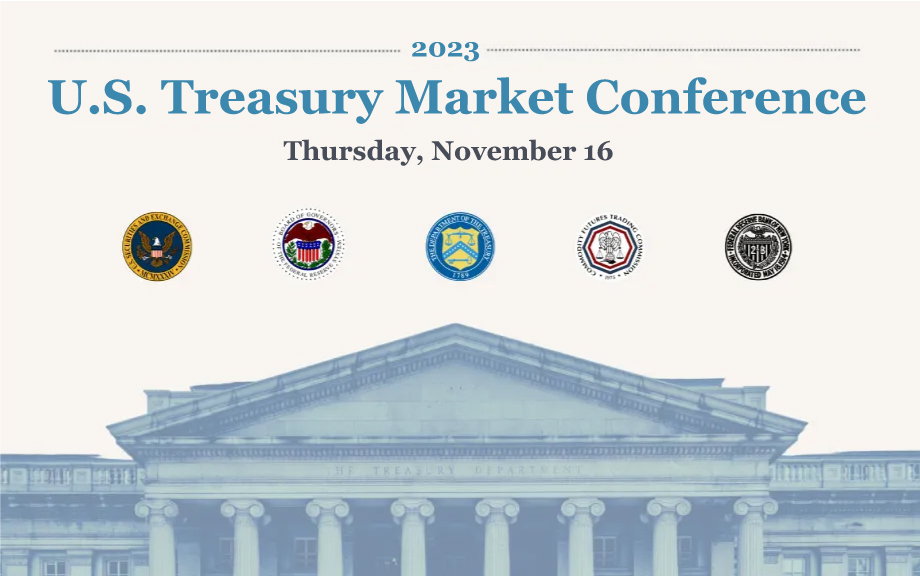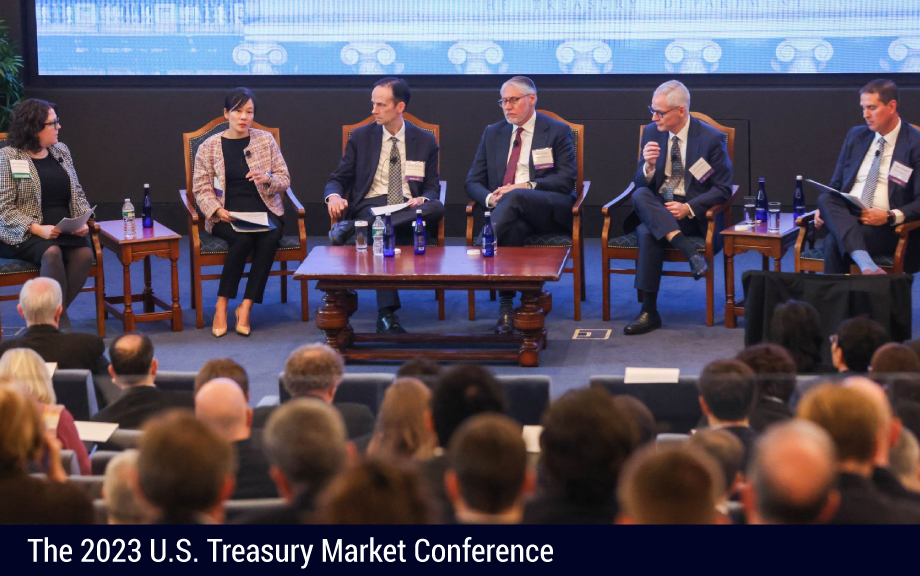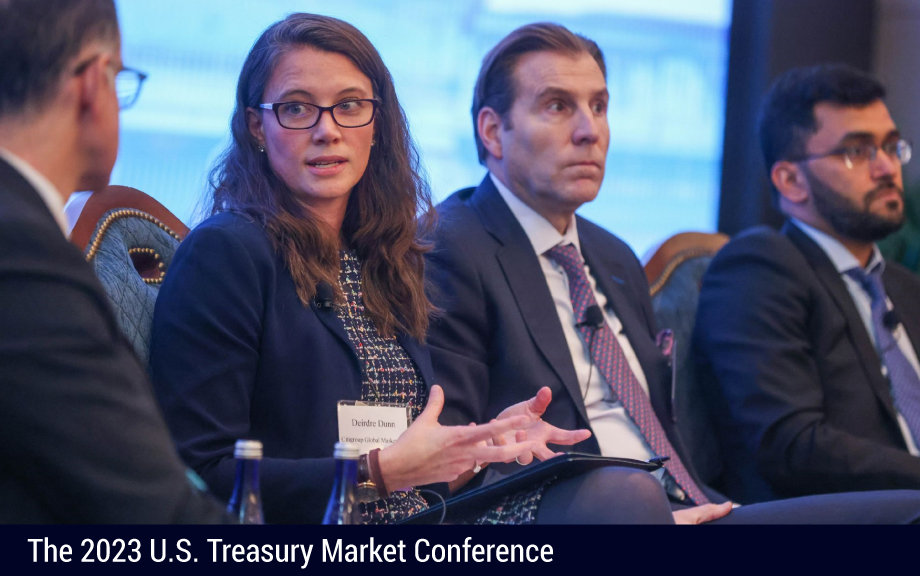
At the ninth annual U.S. Treasury Market Conference, David Bowman, from the Division of Monetary Affairs at the Federal Reserve Board, moderated a panel soliciting perspectives on trading practices, motivations, and risk management considerations in the non-centrally cleared bilateral repo (NCCBR) market. The panel included representatives from three broker-dealer firms, a hedge fund, and the Office of Financial Research (OFR). Although insight into NCCBR activity is relatively limited, it is estimated to be the largest Treasury repo market segment and acts as a major source of funding to nonbank financial institutions, particularly hedge funds.
NCCBR Activity and Trading Practices
The OFR representative summarized the findings of a recent OFR pilot study of the NCCBR market, highlighting several potential factors driving NCCBR activity. These included potentially lower costs than central clearing for some customers and greater flexibility in terms of “haircuts,” which refers to the difference between the initial market value of an asset and the discounted value when it’s pledged as collateral in a repo transaction. A large portion of NCCBR trades have zero haircuts, and market outreach attributed this prevalence to netted trades–where packages of repo and reverse repo trades are offset against each other in bilateral transactions. These transactions offer dealers capital and accounting benefits, which they can pass on to cash borrowers as zero haircuts. Such netting benefits are also available in centrally cleared repo segments, as trades are novated to the Central Clearing Counterparty (CCP), which can be treated as the sole counterparty. The NCCBR segment also appears to be a preferred avenue for longer-term repo trades, since a portion of these trades involve non-Treasury collateral that is ineligible for central clearing under current CCP models.
Reflecting on the NCCBR market, dealer panelists noted that using a CCP can increase trading costs, which can drive the decision to centrally clear or not. Additionally, some clients are interested in having a fixed haircut over the period of their repo trades, which may not be as feasible in the cleared space given the possibility of CCP variable margin regimes. Other factors mentioned as driving whether to centrally clear or not included the terms of netting arrangements with clients, the duration of the underlying trade, and the concentration risk of the underlying trade, at the CCP, or among broker dealers. Some smaller dealers may face higher costs to support central clearing, or sponsored trades, for their clients. The hedge fund panelist, whose firm is an active user of both NCCBR and sponsored repo, noted that counterparty exposure and costs were among its considerations.
On the topic of haircuts, some highlighted how competitive forces may be contributing to zero haircuts, and even when netting, there can still be residual risk associated with duration mismatches related to the collateral. Some panelists additionally noted that margin is sometimes applied on the portfolio level to address risk, in lieu of trade-level haircuts, and the portfolio-assessed margin can include margin from positions in the futures market. One panelist noted that a minimum haircut requirement across the board, applicable to both centrally cleared and uncleared trades, could be worth consideration.
Cash Futures Basis Trade
On the topic of the basis trade, Bowman asked the panelists if the market was in a similar situation and exposed to the risk of a March 2020-like unwind. Panelists noted that current activity in the basis trade was similar in that hedge funds—participants in the NCCBR market—were providing liquidity by connecting the Treasury cash and futures markets given a lack of natural suppliers in the futures market. However, they noted the market appears to be using less leverage in these trades than in 2019. A couple of panelists highlighted that hedge funds, in part because of their interest in the basis trade, have been a meaningful source of demand for Treasury securities, which is important in the current environment of growing issuance.
Impact of Broader Central Clearing
Panelists said that if central clearing was more broadly adopted, they would expect increased costs, and perhaps wider bid-offer spreads—since more repo trades would be subject to the CCP’s uniform margining regime, which would in turn increase the CCP default fund. Similar to today, dealers and other CCP members would need to decide whether to bear the increased margin cost—as some dealers currently do—or to pass that burden onto their sponsored clients. One panelist noted that, absent changes in clearing rules, increased central clearing could disadvantage smaller dealers and increase concentration. Panelists noted that the benefits of more central clearing in the repo market could include better oversight, data transparency, and increased netting efficiencies to enhance dealer intermediation capacity when balance sheets are constrained. Such benefits could lead to improved liquidity and lower trading costs over time.
Next, in an accompanying article, we will share key takeaways from the panel on assessing recent Treasury market resiliency and liquidity.
A replay of this panel is available on the 2023 U.S. Treasury Market Conference event page, starting 22 minutes and 56 seconds into the embedded video.
Leon Barker is a capital markets trading associate in the Markets Group.
Ellen Correia Golay is a policy advisor in the Markets Group.
Brian Greene is a capital markets trading associate director in the Markets Group.
Also in this series:
The views expressed in this article are those of the contributing authors and do not necessarily reflect the position of the New York Fed or the Federal Reserve System.













